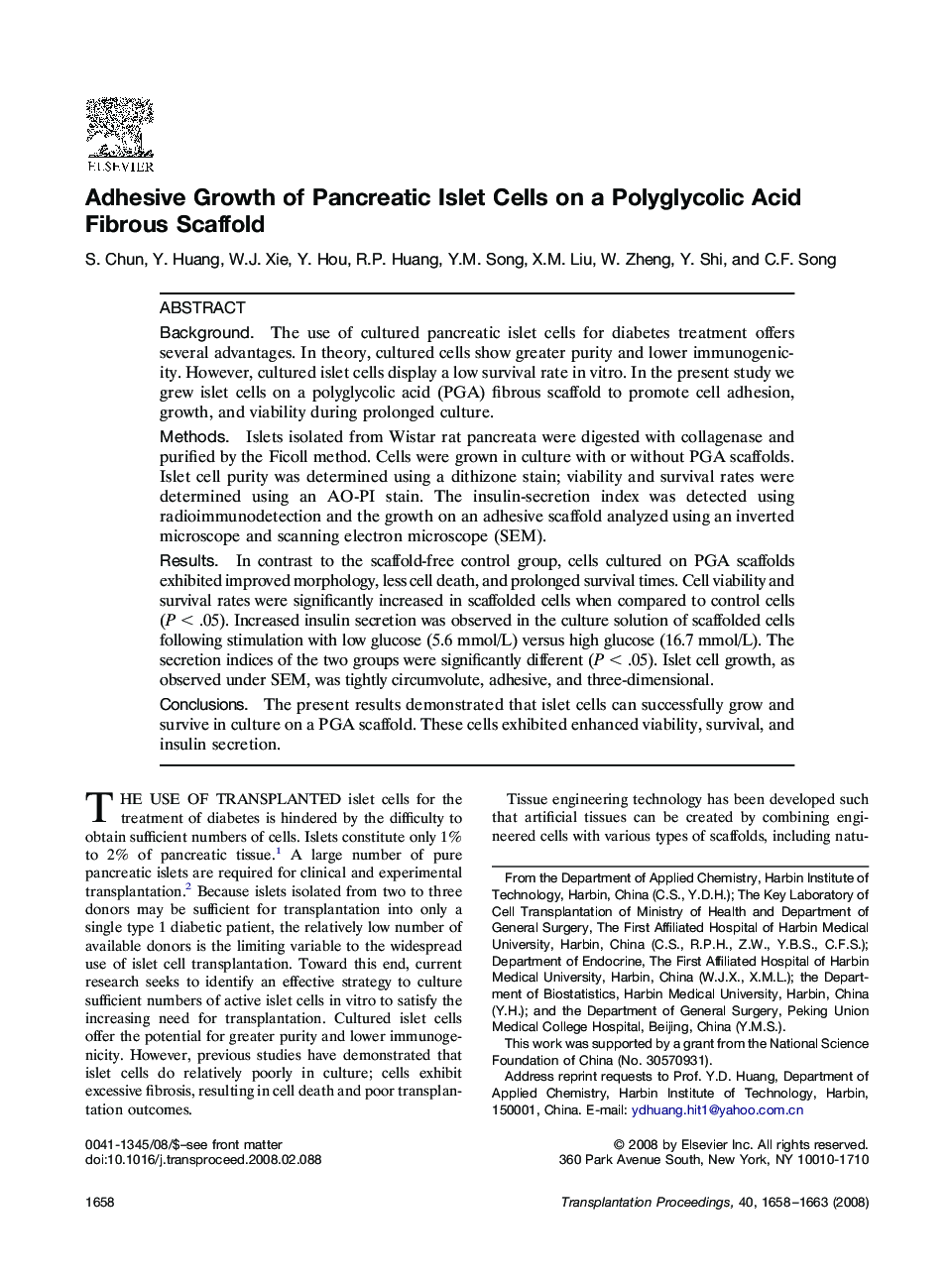| Article ID | Journal | Published Year | Pages | File Type |
|---|---|---|---|---|
| 4258279 | Transplantation Proceedings | 2008 | 6 Pages |
BackgroundThe use of cultured pancreatic islet cells for diabetes treatment offers several advantages. In theory, cultured cells show greater purity and lower immunogenicity. However, cultured islet cells display a low survival rate in vitro. In the present study we grew islet cells on a polyglycolic acid (PGA) fibrous scaffold to promote cell adhesion, growth, and viability during prolonged culture.MethodsIslets isolated from Wistar rat pancreata were digested with collagenase and purified by the Ficoll method. Cells were grown in culture with or without PGA scaffolds. Islet cell purity was determined using a dithizone stain; viability and survival rates were determined using an AO-PI stain. The insulin-secretion index was detected using radioimmunodetection and the growth on an adhesive scaffold analyzed using an inverted microscope and scanning electron microscope (SEM).ResultsIn contrast to the scaffold-free control group, cells cultured on PGA scaffolds exhibited improved morphology, less cell death, and prolonged survival times. Cell viability and survival rates were significantly increased in scaffolded cells when compared to control cells (P < .05). Increased insulin secretion was observed in the culture solution of scaffolded cells following stimulation with low glucose (5.6 mmol/L) versus high glucose (16.7 mmol/L). The secretion indices of the two groups were significantly different (P < .05). Islet cell growth, as observed under SEM, was tightly circumvolute, adhesive, and three-dimensional.ConclusionsThe present results demonstrated that islet cells can successfully grow and survive in culture on a PGA scaffold. These cells exhibited enhanced viability, survival, and insulin secretion.
